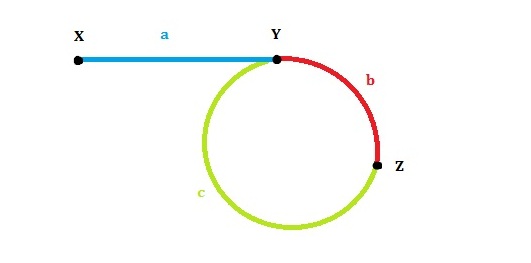给定一个链表,如果有环,返回环的起点,如果没环,则返回空指针。
法一:unordered_set存做过的节点,一旦出现重复,那么它就是起点了。O(n)空间
/** * Definition for singly-linked list. * struct ListNode { * int val; * ListNode *next; * ListNode(int x) : val(x), next(NULL) {} * }; */ class Solution { public: ListNode *detectCycle(ListNode *head) { if (!head || !head->next) return NULL; unordered_set<ListNode *> uset; uset.insert(head); while(head -> next) { if (uset.count(head -> next)) return head -> next; uset.insert(head -> next); head = head -> next; } return NULL; } };
法二:我们想要在常数空间解决,那么就要分析一下图了。我直接参考这位大神的了:

两个指针一个走一步,一个走两步,假设在环中Z相遇,那么一个从X开始走,一个从Z开始走,每次走一步,就会在Y相遇。返回Y就行了。
因为由两个指针速度知道2*(a+b) = a + b + c + b,那么a == c了,所以从X和Z出发就会在Y相遇了。
/** * Definition for singly-linked list. * struct ListNode { * int val; * ListNode *next; * ListNode(int x) : val(x), next(NULL) {} * }; */ class Solution { public: ListNode *detectCycle(ListNode *head) { if (!head || !head->next) return NULL; ListNode *l1, *l2, *l3, *l4; l1 = head; l2 = head; while(l1 && l2) { l1 = l1 -> next; l2 = l2 -> next; if (!l2) break; l2 = l2 -> next; if (l1 == l2) break; } if (!l1 || !l2) return NULL; l3 = head; while(1) { if (l3 == l1) return l1; l1 = l1 -> next; l3 = l3 -> next; } } };